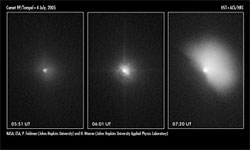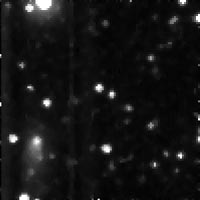This area deals with the fundamental laws and building blocks of nature and how they interact, the properties and the behavior of matter, and research into space and time and their structures.
innovations-report provides in-depth reports and articles on subjects such as astrophysics, laser technologies, nuclear, quantum, particle and solid-state physics, nanotechnologies, planetary research and findings (Mars, Venus) and developments related to the Hubble Telescope.

The European Space Agency (ESA) and the Indian Space Research Organisation (ISRO) signed an agreement on 27 June 2005 for including European instruments on board India’s first scientific mission to the Moon, Chandrayaan-1.
This agreement, under the umbrella agreement for co-operation already existing between ISRO and ESA, was signed by Mr G Madhavan Nair, Chairman of ISRO, and Mr Jean Jacques Dordain, Director General of ESA, at Bangalore.
Chandrayaan-1 is planned

Researchers from HP Laboratories in Bristol, UK, have proposed an approach to distributed optical quantum computing with a technique that is highly efficient, flexible and scalable.
Quantum computing is expected to be much more powerful than conventional information processing. It should be able to search faster and simulate better, factor large numbers efficiently and virtually guarantee secure communications.
Optical quantum computing – using photons instead of electro

The NASA/ESA Hubble Space Telescope captured the dramatic effects of the collision early July 4 between a 370-kilogram projectile released by the Deep Impact spacecraft and comet 9P/Tempel 1.
The sequence of images (files enclosed to this release) shows the comet before and after the impact. The image at left shows the comet 10 minutes before the impact. The encounter occurred at 7:52 a.m. CEST
In the middle image, captured 15 minutes after the collision, Tempel 1 ap

Images of Comet 9P/Tempel 1 taken by the Optical Monitor on ESA’s XMM-Newton observatory, from two minutes before impact and until seven minutes after impact.
The first two images were taken just before impact, and in the following images the brightening due to impact is visible.
These images were taken with the Optical Monitor blue filter, with which it is possible to measure the outcoming gas and dust. More images from the Optical Monitor are expected in the next hou

Astronomers Using the VLT Discover Bright Cosmic Mirage Far Away
Using ESO’s Very Large Telescope, Rémi Cabanac and his European colleagues have discovered an amazing cosmic mirage, known to scientists as an Einstein Ring. This cosmic mirage, dubbed FOR J0332-3557, is seen towards the southern constellation Fornax (the Furnace), and is remarkable on at least two counts. First, it is a bright, almost complete Einstein ring. Second, it is the farthest ever found.
“T

ESA’s Rosetta comet-chaser spacecraft has acquired its first view of the Deep Impact target, Comet 9P/Tempel 1.
This first Rosetta image of the Deep Impact campaign was taken by its Navigation Camera (NAVCAM) between 08:45 and 09:15 CEST on 28 June 2005.
The image shows that the spacecraft now points towards Comet 9P/Tempel 1 in the correct orientation. The NAVCAM is pointing purposely slightly off-target to give the best view to the science instrumentation.
The